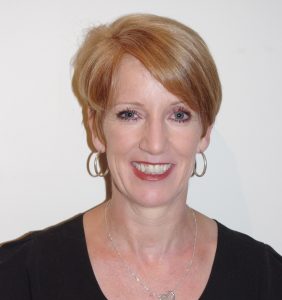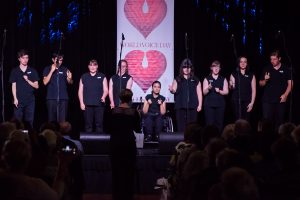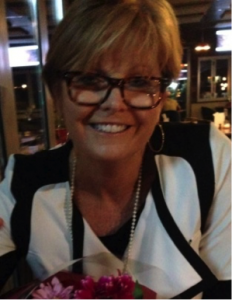An article by Dr Malcolm Baxter.
When I trained in ENT in the mid-1970s, laryngology was somewhat in the doldrums and not regarded as a subspecialty, which is surprising given its great importance in Victorian times with contributions from outstanding laryngologists in Europe, the UK and the USA.
Certainly, laryngeal malignancy was to the forefront, and in general, in Melbourne, laryngeal carcinoma was treated by radiotherapy and salvage laryngectomy although primary partial laryngectomy was increasingly used in some centres.
The options for benign laryngeal disorders were somewhat more limited. We were almost unaware of the seminal work of Hirano. Microlaryngoscopy was done for biopsy and removal of laryngeal lesions, although the instruments were fairly gross, which made it sometimes difficult to produce good results. There was one C02 laser in Melbourne for laryngeal work during my training, and this was at the Royal Children’s Hospital, used for laryngeal papillomatosis which was then considered to be a paediatric disease largely. The occasional adult patient with the disease could be treated there by special dispensation.
Concerning other benign lesions, a popular operation at the time was so-called “vocal cord stripping”, a procedure which sounds as bad as its name and produced expected results. Although various procedures on the external larynx such as the Woodman procedure were described, these were seldom done. We used Teflon injections for the paralysed vocal cord, an excellent solution for those people with a malignant cause who was not expected to live more than six months but unfortunately this was sometimes carried over in some cases to people who did not have a malignant cause for their paralysis, often with unfortunate late results such as local laryngeal granulomata and even Teflon spreading to distant organs.
My interest in laryngology was stimulated by one patient I remember who had a so-called vocal cord stripping and on review in the outpatients on indirect laryngoscopy had beautiful looking vocal cords which moved and apposed beautifully without a sign of any lesion but unfortunately with an absolutely dreadful voice. Of course, the vocal cord stripping ignored the principles of preserving the lamina propria, but without videostroboscopy, I was unable to appreciate the vibration of the vocal cords (or rather the probable total lack of vibration!).
Examination in ENT, including the larynx, throughout most of my training, was still using the frontal mirror, beloved of American cartoonists, using a reflecting lamp which shone from behind the patient on to the surgeon’s head-worn mirror back to the patient. The larynx was examined by indirect laryngoscopy; a technique described first by the singing teacher Garcia in 1862 and which still gave a good visualisation of the larynx in those people whose gag reflex did not completely preclude it but not allowing assessment of connected speech or vibration.
Our speech pathology colleagues usually attended Outpatients but were somewhat frustrated by not being able to visualise the cords and having to rely on our description. Ros Frank, a leading speech pathologist at the Royal Melbourne Hospital, had acquired an attachment which fitted on the surgeon’s frontal mirror and by standing behind the patient looking at the examining surgeon, you could see a reflected image of what the surgeon saw with his mirror – a sort of doubly indirect laryngoscopy! Slightly later the frontal mirror was superseded by the Vorroscope now widely used in Australia by ENT specialists. One further refinement was the use of a half-silvered mirror which was attached to the Vorroscope, which allowed some vision to an external observer.
Even after I did my post-fellowship work overseas, flexible endoscopes were only just making an appearance, although by the end of the ’80s most ENT specialists had converted to using this instrument which obviated the need for indirect mirror laryngoscopy and also thankfully the more difficult technique of mirror nasopharyngoscopy to visualise the nasopharynx.
The general management pattern in the pre-flexible laryngoscope era was that the patient who presented with dysphonia would have an indirect laryngoscopy and if they could not tolerate this or cords not visualised adequately, they would have to be booked for a microlaryngoscopy under a general anaesthetic. The flexible laryngoscope, besides giving better vision, also greatly reduced the number of GA’s which needed to be given.
Once the patient’s vocal cords were seen, they were usually divided into those which had an observable lesion which were usually booked for biopsy or other surgery or those which did not, in which case they disappeared behind the door marked Speech Pathologist (or possibly in those days, Speech Therapist) never to be seen again. There was a generally unspoken assumption that if a person had dysphonia with nothing observable on the larynx, then it was obviously something “in the mind” and who better to deal with this than the speech therapist/pathologist!
Stroboscopy of the larynx had been experimented with previously in several centres overseas but nowhere in Australia at that stage to my knowledge. I do remember reading about this technique before I qualified and thinking it would be something that I would be interested in, but I forgot about it with the pressure of going overseas for post-fellowship work.
On return to Australia, I entered general ENT practice with a special interested in Otology and in the mid-1980’s I asked Laurie Ryan if I could join him at the Royal Victorian Eye & Ear Hospital as a visiting consultant which I duly did. I was a little lost for a role at that stage and decided that acoustic neuroma surgery was probably not for me, but Laurie suggested, knowing that I was interested in singers and music, that I consider setting up a voice clinic at the hospital, a suggestion for which I am always grateful.
A short time before, the hospital had bought an early model laryngeal video stroboscope, the Danish Bruel and Kjaer system, a behemoth of a machine on which one could occasionally see pictures of the vocal cords.
Together, I started the Royal Victorian Eye & Ear Hospital Voice Clinic with Jenni Oates, speech pathologist and we developed a technique of seeing voice patients that presented to us in a joint consultation model which allowed each of us to contribute our own particular special skill sets towards the diagnosis and management. Mercifully the Bruel and Kjaer system was replaced with a new Kay video stroboscope which was updated once or twice and remained the instrument of choice. The Kay system, later Kay Pentax, was the standard workhorse for video stroboscopy for many years both in the public system and our private clinic, although in later years in our private rooms we converted to the Xion.
We started the Eye and Ear Voice Clinic around 1989 and in 1991 we recruited Andrew Hughes, Neurologist, and started a laryngeal Botox service which ran very successfully for several years until Andrew left around 2008 closely followed by me. Unfortunately, this meant that the hospital lost the Botox service although the Voice Clinic was taken up by others, and Jenni continued. Despite this, Andrew, I and Jenni continued to work closely together as Andrew now had a wide experience with Botox injections and although we now no longer worked in the same location, we still maintained close contact and referred patients between ourselves.
Approximately 25 years ago, Jenni and I joined with Neil Vallance (ENT) and Debbie Phyland (Speech Pathologist), to form the Melbourne Voice Analysis Centre, a private Voice Clinic which had so many locations over the years we probably should have used a caravan.
Again, we had the same model of using a joint ENT and speech pathology assessment, and we insisted on this pattern if a person wished to see us for an assessment. Some patients wondered why they should see a speech pathologist when they wanted a diagnosis or vice versa why they should see an ENT surgeon when they were told they needed therapy, but we have always insisted that the model was the best for optimal diagnosis and therapy.
The Melbourne Voice Analysis Centre has continued over the years. We have recruited several other speech pathologists working for Debbie over the years, and Paul Paddle and Charlie Giddings (ENT) have recently joined as laryngologists. We have seen and treated a wide variety of pathologies, benign and malignant. Patients who require an operation have been treated either at a private hospital or by Monash Medical Centre ENT Unit, which both Neil and I were involved with. Over the years, we have taken part in research, therapy and attended international workshops and conferences and made contact with international laryngologists and speech pathologists.
About six years ago we were instrumental in the formation of the Laryngology Society of Australasia, which provides a forum for research and clinical focus for all professionals that are interested in the larynx and voice, particularly laryngologists, other ENT specialists, speech pathologists and voice scientists. Laryngology has now happily reached the stage where some registrars, here and interstate have gone away and done laryngology Fellowships in the US and brought their skills back. Laryngology is firmly established here, as overseas, as a subspecialty and one which engages the interest of many trainees
Over the years I consider there have been many important advances such as better imaging and documentation due to progress in video stroboscopy, better operative results due to respect for the physical principles of the structure and function of the vocal cord and the advent of finer delicate laryngeal instruments. I had a special interest in the paralysed vocal cord, and we have used a variety of techniques both by injection laryngoplasty and external thyroplasty to correct this problem. I myself mainly used autologous fat for injections as I was comfortable with it and felt I achieved better results but there are now excellent newer synthetics on the market. Similarly, the laser is becoming increasingly important in its various manifestations and another particular interest has been the treatment of adult laryngeal papillomatosis for which we have used various techniques including laser, micro debridement and Cidofovir injection in an attempt to control this dreadful disease.
A focus of course both in public and private has been the so-called “professional voice user”, a concept I have never been entirely comfortable with as I believe that a person’s voice is important to them irrespective of occupation. Whilst recognising that singers and actors are totally dependent on their voice people such as teachers and call centre workers are economically dependent on it as well. We have seen a wide variety of people from all walks of life including singers at all stages of their profession. Apart from those reliant on it for their living, there are of course the students and aspiring singers but also a large variety of people who sing for the love of it and for whom dysphonia is a significant handicap in that it is often such as major interest in their life.
Of course, laryngeal disease may manifest as airway problems also which I became increasingly interested in. One unexpected consequence of this was suddenly becoming an apparent magnet for Chronic Cough referrals, often from Respiratory Physicians. Thankfully I fell back on the earlier principle of sending them to the Speech Pathologist but many came back leaving us trialling things like Gabapentin with variable results.
A few years ago, Professor Phil Bardin at Monash Lung and Sleep Department, Monash Medical Centre formed a Laryngeal Clinic because of their interest in vocal cord dysfunction as it impacted on respiratory conditions and its relationship with difficult to control asthma. Although this was a source of some turf war mutterings, it is, in fact, logical that the Respiratory Physician should be equally interested in this condition of vocal cord dysfunction or VCD, now increasingly becoming known as ILO (Inducible Laryngeal Obstruction).
Phil and I ultimately joined together to form a Multidisciplinary Team and clinic to tackle this problem at Monash. Debbie Phyland joined us as a speech pathologist plus Ken Lau as a radiologist with Laurie Ruane, respiratory scientist and we conduct outpatient clinics and injecting session for laryngeal Botox as well. Our treatment protocol involves “Laryngeal Retraining” (Speech Pathologist again!) in the first instance and those not responding may be offered laryngeal botox or other modalities. We have now seen over 80 patients with some encouraging results and have published our results.
I no longer operate apart from squirting the odd amount of Botox into the vocal cords and do not see many voice patients these days. I have, however, become increasingly interested in patients with VCD /ILO. These are generally fairly sick patients, and I believe our clinic is helping them greatly although whether it is the therapies we offer or the psychological support we give, I am not entirely sure. Watch this space as this is a work in progress!
If you had told me at the beginning of my career that I would at the end be managing chronic cough and asthmatics and working with Respiratory Physicians, I would have thought you were mad, or possibly changed specialities.
In summary, it is gratifying looking back over the last 40 odd years to see what has happened to laryngology in this country. It is now definitely at the point where it is recognised as being a separate sub-speciality of Otolaryngology, and this must be for the good of our practice and our patients.
“Unless stated otherwise, this article represents only the views of the author and not the views of the AVA”



 The Australian Voice Association
The Australian Voice Association



